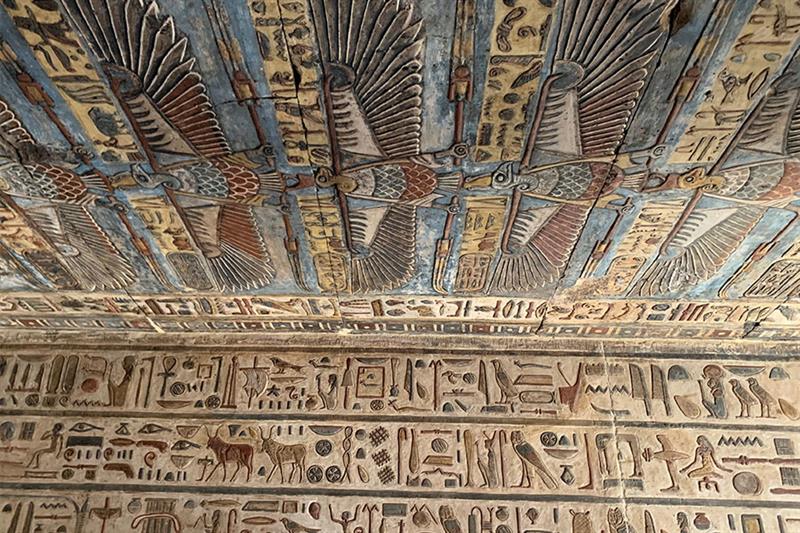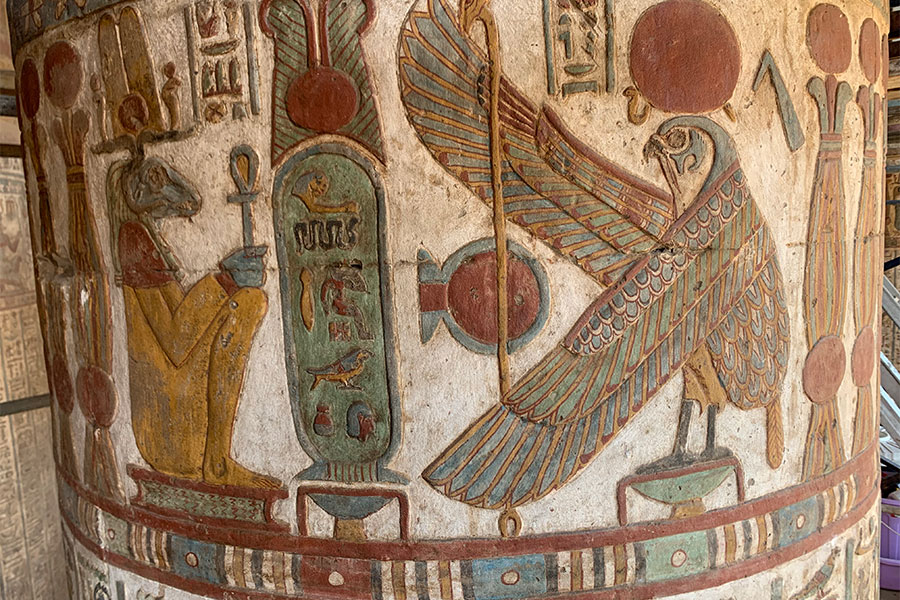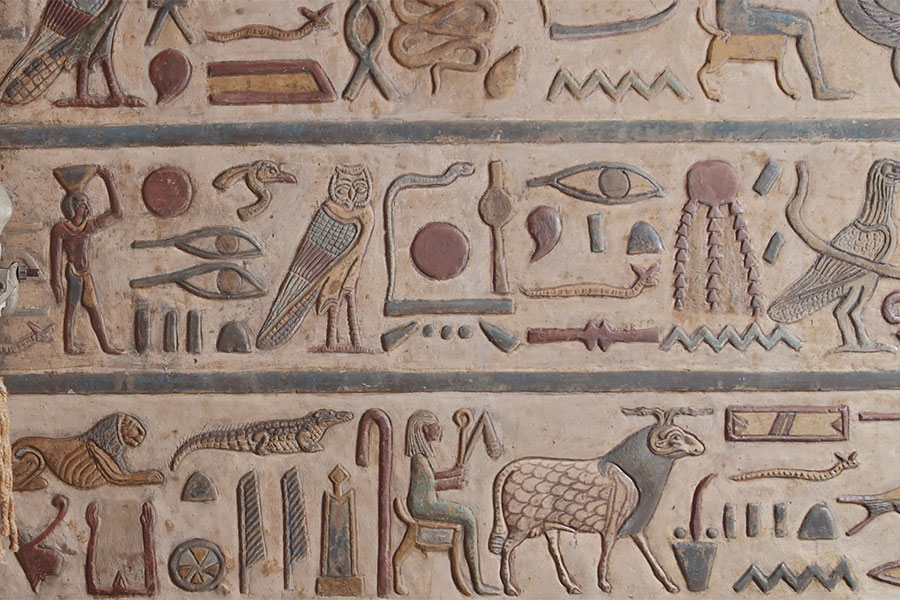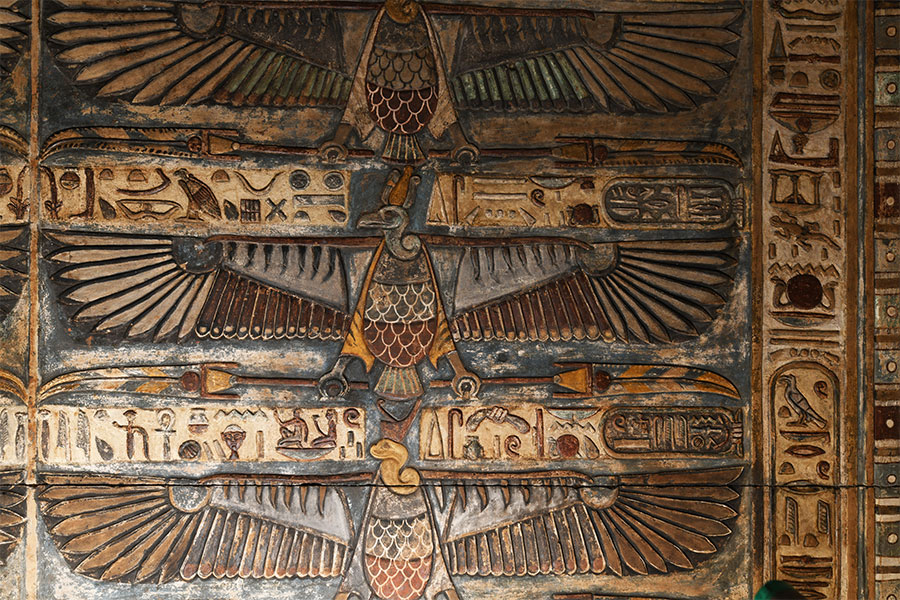In Photos: Ancient engravings, reliefs uncovered during restoration of Temple of Esna
Nevine El-Aref , Friday 13 May 2022
The Egyptian-German archaeological mission has uncovered original reliefs and engravings on the walls and ceilings of Temple of Esna in Luxor, Upper Egypt during ongoing restoration work.

The mission uncovered a distinguished relief on top the entrance gate of the temple showing 46 eagles standing in two rows, with some bearing the heads of the Upper Egypt goddess Nekhbet, and others bearing the head of the Lower Egypt goddess Wadget.
"This is the first time to find this relief," said Mostafa Waziri, secretary general of the Supreme Council of Antiquities. "It was not seen or mentioned in the works published by the French Egyptologist Serge Soniron, who documented the temple's reliefs in 1963 and 1975, Waziri added.
Hisham El-Leithy, the head of the Central Department for Egyptian Documentation Centre and head of the mission from the Egyptian side, explained that the uncovered reliefs and engravings at the Esna temple were hidden beneath dust and accumulation of salts and birds deposits over the last 2000 years.
This discovery made it important for us to begin a restoration project, funded by the American Research Centre in Cairo, to protect the temple and uncover its decorations, El-Leithy stressed.
Meanwhile, the mission also found a Roman engraving in red ink at the western side of the temple dating from the era of the Roman Emperor Domitian, 81-96 CE, who might have completed the construction of the temple.
More studies will be carried out on these engraving to show more details.
Construction on the Temple of Esna, which is dedicated to the ram god Khnum and his divine consorts, began in the Roman era during the reign of Emperor Claudius (41-54 AD) and its decoration was completed during the reign of Emperor Decius (249-251 AD).
During the 19th and 20th centuries, the Temple of Esna suffered from urban encroachment, which limited access to the site only through one of the houses built around it.
During the reign of Mohamed Ali Pasha (1805-1840 AD), the temple is reported to have been used as a storage facility for the cotton crop.



-- Sent from my Linux system.
No comments:
Post a Comment